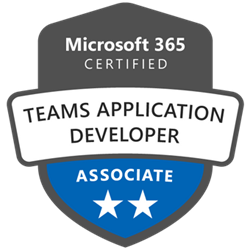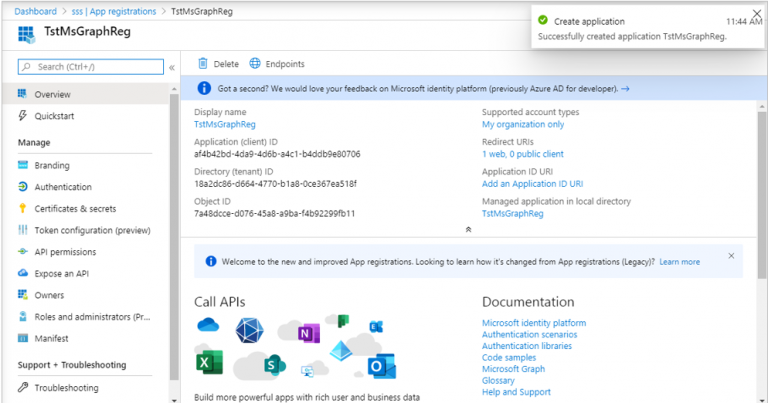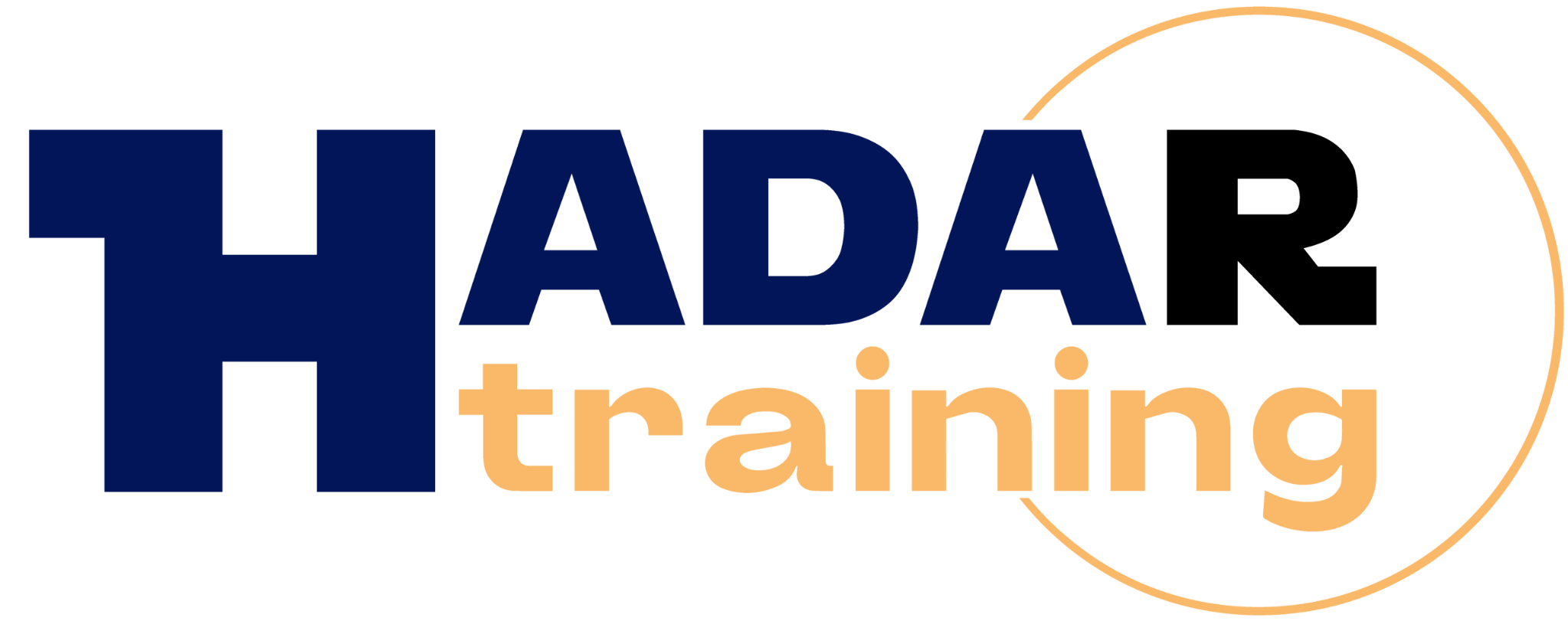Building applications and solutions with Microsoft 365 core services MS-600

The MS-600 Building Applications and Solutions with Microsoft 365 Core Services course is designed to prepare developers and IT professionals to build, deploy, and manage applications and solutions using Microsoft 365 core services. In the course, participants will learn to leverage the powerful capabilities of Microsoft 365 to improve the productivity, collaboration and security of their organizations. One of the main goals of the course is to teach participants how to use Microsoft Graph APIs to access and manipulate data within Microsoft 365. They will learn to create applications that interact with Microsoft 365 services such as Outlook, OneDrive, SharePoint, and Microsoft Teams, taking advantage of the features offered by these platforms to improve productivity and efficiency. The course also focuses on using Microsoft Azure Active Directory (Azure AD) to manage authentication and authorization in Microsoft 365 applications. Participants will learn to register their applications in Azure AD, configure access control, and implement secure authentication with OAuth2 tokens and OpenID Connect. Additionally, the course covers developing custom solutions using SharePoint Framework (SPFx) extensions and Microsoft Teams apps. Participants will learn how to create custom web components, extensions, and bots that improve the user experience within SharePoint and Teams, making it easier to collaborate and share information. Finally, the course addresses best practices for implementing and managing Microsoft 365 solutions, including performance monitoring, continuous delivery, and process automation. Participants will learn to use tools and services such as Visual Studio Code, Git, Azure DevOps, and Power Automate to develop, test, and deploy their applications efficiently and securely. The course helps prepare for the Microsoft 365 Teams Application Developer Associate Certification exam.
Course Objectives
Below is a summary of the main objectives of the Building Applications and Solutions with Microsoft 365 Core Services MS-600 course :
- Using Microsoft Graph API to access and manipulate data in Microsoft 365.
- Development of custom solutions with SharePoint Framework.
- Building applications for Microsoft Teams.
- Managing authentication and authorization with Azure Active Directory.
- Using tools like Visual Studio Code and Power Automate for development and automation.
- Implementing Microsoft 365 solutions that integrate with external data sources.
- Developing custom connectors and APIs for Microsoft 365 applications.
- Designing and implementing Microsoft 365 solutions that support collaboration and productivity across different devices and platforms.
Course Certification
This course helps you prepare to take the:
MS-600 Building Applications and Solutions with Microsoft 365 Core Services exam;
Course Outline
Assess Microsoft Teams and existing app integration opportunities
- Assess current Teams adoption level using M365 Maturity Model
- Identify opportunities for no-code or low-code development (Microsoft Power Platform, Azure Logic Apps, Dataverse for Teams)
- Assess Teams integration opportunities with existing applications
Design development and production environments
- Design test, acceptance, production, and deployment strategy to meet solution requirements
- Design development environment by using Microsoft 365 developer tenant
- Recommend Azure services for Teams app use cases (serverless compute workflows)
- Specify app requirements for CI/CD integration
- Develop an appropriate tooling strategy for a Teams solution, including the Teams Toolkit vs Yeoman Teams Generator
- Select an appropriate development framework and runtime platform for a Teams solution (including Teams Toolkit for React or Teams Toolkit Blazor)
- Select an appropriate runtime platform for a Teams solution (including Node.js, .NET, and/or SPFx)
Design solution based on technical and business requirements
- Design authentication scenarios, including for guest users and multitenant authentication
- Design UI by using Microsoft Teams UI Library, Fluent UI React Northstar, Adaptive Cards, and Microsoft Teams UI Kit for Figma
Register an application
- Determine the supported account type
- Select authentication and client credentials for app type and authentication flow
- Define app roles
Implement authentication
- Configure the JavaScript implementation of Microsoft Authentication Library (MSAL) for endpoint and token cache
- Plan and configure scopes for dynamic or static permission
- Use the MSAL (JavaScript) login method
- Implement single sign-on authentication for a bot
- Implement single sign-on authentication for a tab
Configure permissions to consume an API
- Configure delegated permissions for the app
- Configure application permissions for the app
- Specify and implement consent requirements
- Grant consent to an application
Implement authorization to expose or consume an API
- Configure incremental consent scopes
- Grant scoped permissions to API
- Call MSAL (JavaScript) using AcquireTokenSilent/AcquireToken pattern
Implement authorization in an API
- Validate access token
- Configure effective permissions for delegated scopes
- Implement app permissions by using roles
- Use a delegated access token to call a Microsoft API
Create a service to access Microsoft Graph
- Configure client credentials using a certificate
- Consume certificates from Key Vault, including using managed identities
- Configure application permissions for the app
- Acquire an access token for Microsoft Graph using an application permission and client credential certificate
Access data from Microsoft Graph
- Determine whether to retrieve data using a Microsoft Graph SDK or the Graph REST API
- Get the signed-in user’s profile
- Get a list of users in the organization
- Get the user object based on the user’s unique identifier
- Access user data from Microsoft Graph
- Create, read, update, and delete data
- Traverse Microsoft Graph to retrieve data
- Upload files larger than 10 mb to Teams
- Implement Microsoft Graph Toolkit
Customize responses by using query parameters
- Use query parameters, including $filter, $select, $orderby, $count, $skip, and $stop
- Expand and retrieve resources using $expand query parameter
- Search for resources using $search query parameter
- Access paged date using $odata.nextLink, $skip, and $skiptoken parameters
- Test queries and responses by using Microsoft Graph Explorer
Optimize usage of Microsoft Graph resources
- Monitor for changes using change notifications
- Combine multiple requests using $batch
- Get changes using a delta query
- Detect and handle throttling
Manage a team lifecycle by using Microsoft Graph
- Get the information on a team by ID
- Get the list of members in a team
- Get the list of owners of a team
- Get the list of teams where the signed in user is a member
- Provision a team using an existing Teams template
- Delete or archive a team
- Update an existing team
- Enable resource-specific consent
Describe the components of a SharePoint Framework (SPFx) solution
- Identify the appropriate tool to create an SPFx Web Part project
- Describe properties of client-side web parts
- Describe Office UI Fabric (Fluent UI) in client-side web parts
- Explain when to use an app page
- Differentiate between app page and web part
- Describe rendering framework options
- Describe branding and theming in SharePoint Online
- Describe Adaptive Card Extensions
- Describe Viva Connections and Viva dashboard
- Describe the types of SPFx extensions (Application Customizer, Field Customizer, Command Set extension)
Describe the process to package and deploy an SPFx solution
- Describe the options for preparing a package for deployment
- Describe the options for packaging a solution
- Describe the requirements of tenant-scoped solution deployment
- Describe the requirements of domain isolated web parts
- Describe the options to deploy a SPFx solution
- Describe how to build a Microsoft Teams tab by using SPFx
- Manually create an app manifest to deploy a SPFx Web Part to Teams
Describe the consumption of Microsoft Graph
- Describe the purpose of the MSGraphClient object
- Describe the methods for granting permissions to Microsoft Graph
Describe the consumption of third-party APIs secured with Microsoft Entra ID from within SPFx
- Describe the purpose of the AadHttpClient object
- Identify the methods for granting permissions to consume a third-party API
Describe Web Parts as Teams Tabs
- Describe the considerations for creating a SPFx Web Part to be a Teams Tab
- Describe the options for deploying a SPFx Web Part as a Teams Tab
Create a Microsoft Teams app manifest
- Configure an app manifest using the Developer Portal
- Create an app package for a Microsoft Teams app
Create and use task modules
- Create a card-based task module
- Create an iframe-based task module
- Invoke a task module from a tab
- Invoke a task module from a bot
- Chain task module invocations
Create a webhook
- Create an outgoing webhook
- Create an incoming webhook
Implement custom Teams tabs
- Create a personal tab
- Implement device permissions in a personal tab
- Create a channel/group tab
- Create a tab with a deep link
- Create an adaptive card tab
Create a messaging extension
- Create a search command extension
- Create an action command extension using an adaptive card
- Create an action command extension using parameters
- Add link unfurling
Create conversational, call, and online media bots
- Create a personal bot
- Create a group/channel bot
- Send actionable messages from a bot
- Create a call bot
- Create an online media bot
- Handle incoming calls
- Transfer incoming calls
Create a meeting extension
- Describe the capabilities of Microsoft Teams meeting apps
- Enable and configure apps for Teams meetings
- Create or integrate apps within the meeting lifecycle
- Implement shared meeting stage
Test apps and solutions
- Design test plans, including Bots, Connectors, Messaging extensions, Meeting extensions, SSO, and Adaptive cards
- Specify required sample data for testing
- Deploy sample data by using M365 CLI or PowerShell scripts
- Execute test plans, including Bots, Connectors, Messaging extensions, Meeting extensions, SSO, and Adaptive cards
Deploy apps and solutions
- Create or modify app definitions in the Developer Portal for Teams
- Manage Teams apps packages by using the Developer Portal for Teams
- Upload a custom app to a single user or team
- Upload an app to the App Catalog
- Upload an app to the Developer Portal for Teams
- Automate deployment of Teams apps
Monitor and maintain published apps
- Recommend audit settings using Microsoft 365 Audit logging
- Review and evaluate performance using App Insights
- Monitor Microsoft Graph API permissions by using the Microsoft 365 compliance center
- Assess new SDK versions for impact to published apps
- Analyze logs, usage data, and audit data
Course Mode
Instructor-Led Remote Live Classroom Training;
Trainers
Trainers are authorized Instructors in Microsoft and certified in other IT technologies, with years of hands-on experience in the industry and in Training.
Lab Topology
For all types of delivery, the participant can access the equipment and actual systems in our laboratories or directly in international data centers remotely, 24/7. Each participant has access to implement various configurations, Thus immediately applying the theory learned. Below are some scenarios drawn from laboratory activities.

Course Details
Course Prerequisites
- Participation in the Microsoft 365 Fundamentals course is recommended.
Course Duration
Intensive duration 5 days;
Course Frequency
Course Duration: 5 days (9.00 to 17.00) - Ask for other types of attendance.
Course Date
- Developing solutions for Microsoft 365 core services course (Intensive Formula) – On request – 09:00 – 17:00
Steps to Enroll
Registration takes place by asking to be contacted from the following link, or by contacting the office at the international number +355 45 301 313 or by sending a request to the email info@hadartraining.com


